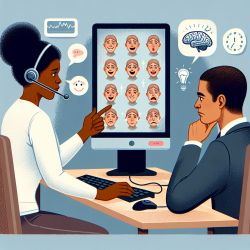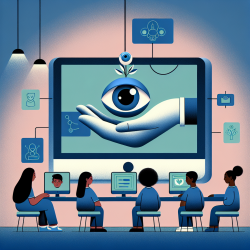As practitioners dedicated to improving the lives of children, leveraging data-driven approaches is crucial for achieving the best outcomes. One such promising approach is the use of telepractice for Facial Affect Recognition (FAR) training, particularly for individuals with chronic traumatic brain injury (TBI). A recent study titled Facial Affect Recognition Training Through Telepractice: Two Case Studies of Individuals with Chronic Traumatic Brain Injury highlights the effectiveness of this method.
Key Findings from the Study
The study conducted by Williamson and Isaki (2015) focused on two adults with moderate to severe chronic TBI. The participants underwent a modified FAR training program delivered via telepractice, which included:
- Identifying emotions through static facial expressions
- Personally reflecting on those emotions
- Identifying sarcasm and emotions within social stories and role-play
Both participants showed significant improvements in recognizing facial emotions, demonstrating that telepractice can be an effective delivery system for FAR training.
Implementing FAR Training in Your Practice
To enhance your skills as a practitioner, consider incorporating the following strategies based on the study's outcomes:
- Use Static Facial Expression Cards: Start with static images of various emotions to help clients identify different facial expressions. Gradually increase the complexity by introducing emotions of varying intensities.
- Incorporate Personal Reflection: Encourage clients to reflect on situations that correspond to different emotions. This helps in building an emotional vocabulary and understanding the context of emotions.
- Role-Play Scenarios: Use role-play to help clients identify sarcasm and understand the difference between facial expressions and spoken words. This aids in improving their social communication skills.
Why Telepractice?
Telepractice offers several advantages, especially for clients in remote areas where in-person therapy may not be feasible. The study supports the notion that telepractice is not only effective but also a cost-efficient method for delivering therapy. The use of secure, real-time telecommunication programs ensures that therapy sessions are both accessible and HIPAA-compliant.
Encouraging Further Research
While the study shows promising results, further research is needed to validate these findings across a larger sample size. As practitioners, staying informed about the latest research and continuously seeking evidence-based methods will ensure that we provide the best possible care for our clients.
To read the original research paper, please follow this link: Facial Affect Recognition Training Through Telepractice: Two Case Studies of Individuals with Chronic Traumatic Brain Injury.










